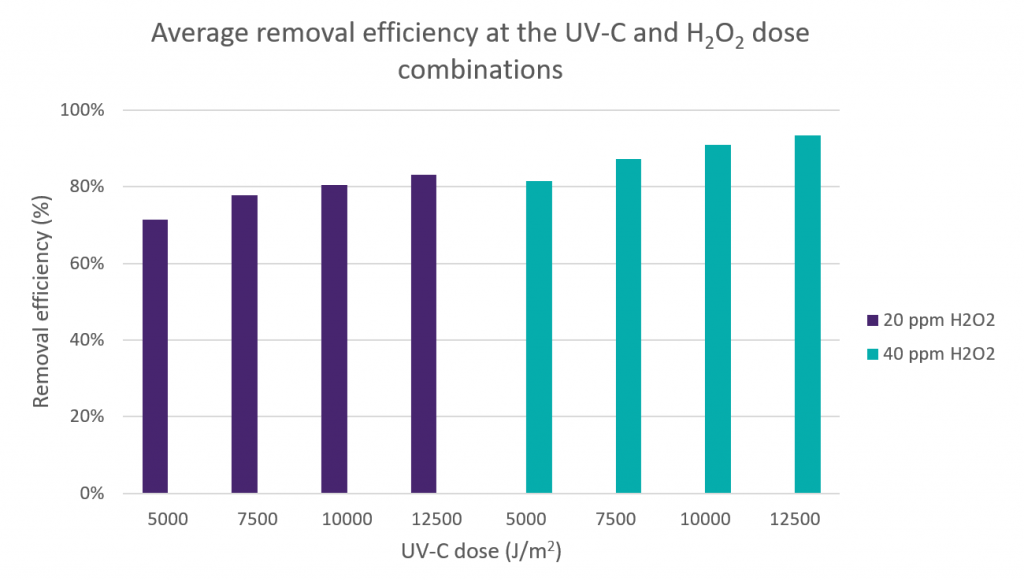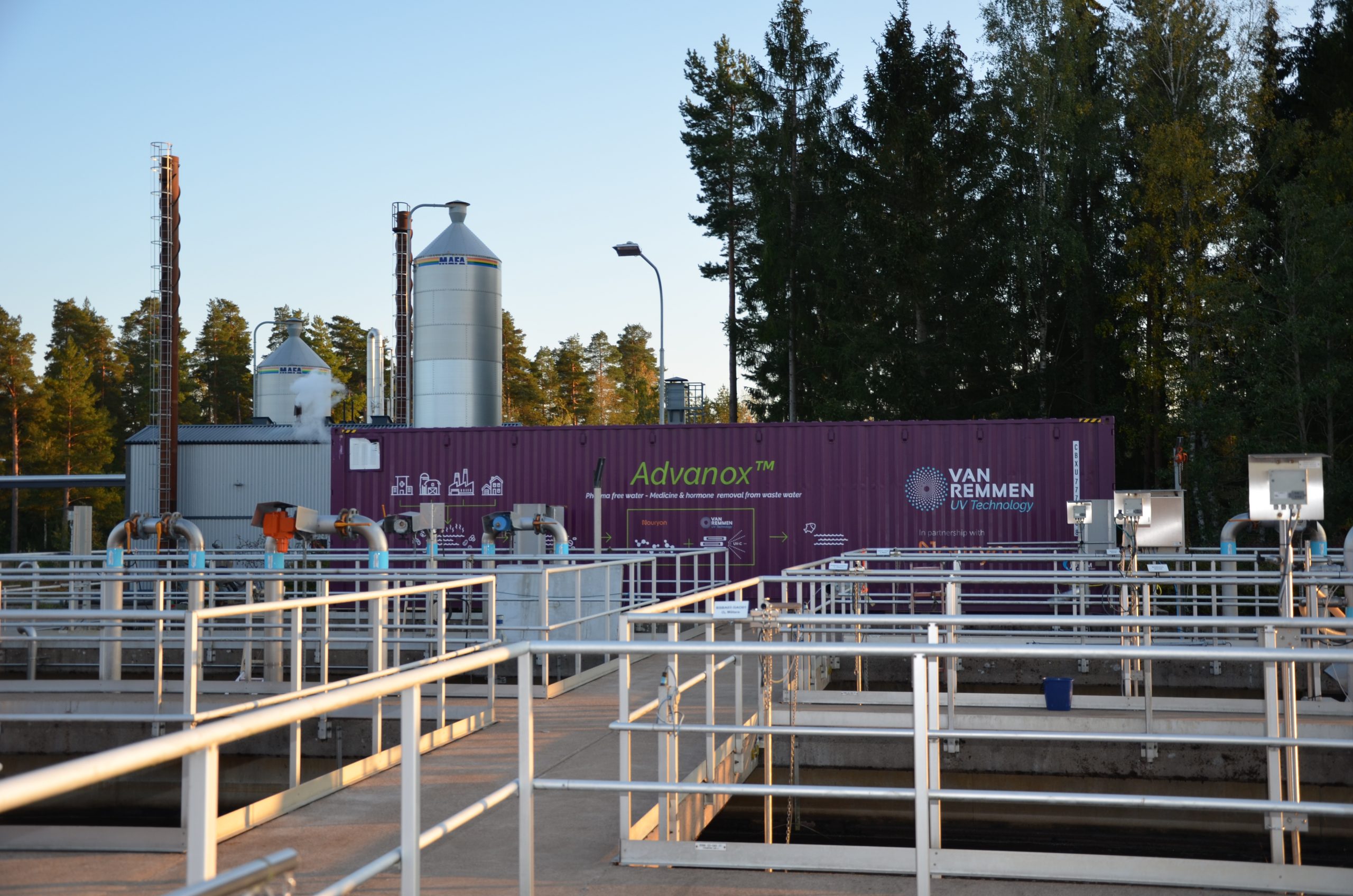During pilot research in Växjö, Sweden, we gained valuable information on the abilities of Advanox™ by Van Remmen UV Technology and of MicrOx™ by Nouryon for removal of micropollutants from wastewater. After the trials further research gave us important insights into the costs of both our solution and that of our main competitor, ozone.
Background
Micropollutants such as pharmaceuticals, hormones, and antibiotics in water is a present and growing problem because of their persistent nature and through increased and more widespread use. They can have large negative effects on ecosystem and human health and famous examples of this are the reports by WHO that antibiotic resistance is going to be a bigger threat than cancer by 2050; male fish developing female attributes after exposure to hormones; and behavioural changes in aquatic life after exposure to antidepressants.
The Case
Because pharmaceuticals, hormones, and antibiotics are used by humans, as well as given to domestic animals, the persistent residues that are excreted all end up at the wastewater treatment plants. This makes wastewater treatment plants a perfect spot for applying advanced treatment techniques to remove the micropollutants before the water exits the plant.
The Solution
Advanced Oxidation Processes is the breakdown of micropollutants with hydroxyl radicals (OH•). In the case of UV-C light and hydrogen peroxide (H2O2) the hydroxyl radicals are formed through homolysis, meaning equal separation, of H2O2. The hydroxyl radicals have the second highest oxidation potential, second only to fluoride, and react with and break down organic micropollutants within milliseconds. At full oxidation only carbon dioxide and water remain, but more commonly there will be remaining transformation products which are widely regarded to be less toxic and more biodegradable than the original compound. Since UV-C light is used there is also a second breakdown effect in the form of direct photolysis, meaning separation by light, which can have a significant impact.
In 2019 we performed pilot research with UV-C light and H2O2 at Sundet Wastewater Treatment Plant in Växjö municipality, Sweden, for Advanced Oxidation with focus on removal of pharmaceuticals, hormones, and antibiotics. The UV-C light came from the Advanox™ reactor by Van Remmen UV Technology, and the hydrogen peroxide in the form of MicrOx™ by Nouryon.
Execution
The pilot research was done in two types of trials: a ‘dose response trial’ that used different UV-C and H2O2 doses to test the performance under different settings but on the same water composition, and two ‘long trials’ that ran continuously with automatic process control to further analyse the performance as well as any ecotoxicological effects. The micropollutants that were selected for analysis were based on recommendations from the Swedish Environmental Protection Agency (Naturvårdsverket), and all analysis was performed by IVL Swedish Environmental Research institute (IVL Svenska Mijöinstitutet).
The trials were performed in the ‘Advanox™ pilot’ which contained among other things a full-scale Advanox™ reactor at 40-200 m3/h capacity, dosing equipment, and catalytic filter beds for removal of residual H2O2.
Results
The ‘dose response trial’ showed that there was a clear increase in removal efficiency with increasing UV-C and/or H2O2 dose. At Sundet WWTP >70% removal was possible on average already at the lowest dose settings tested, 5000 J/m2 UV-C and 20 ppm H2O2, and up to >93% removal was possible on the highest dose setting tested, 12500 J/m2 and 40 ppm H2O2.
The ‘long trials’ showed that during continuous operation the performance was similar to the ‘dose response trial’ and on average the removal efficiencies were only a couple of %-units away. Three types of ecotoxicology tests were performed: green algae, crustaceans, and bioluminescent bacteria. The ecotoxicology effects showed to be low to negligible for green algae and crustaceans, and negligible for the bioluminescent bacteria. Because green algae and crustaceans cannot be tested at 100% solution due to them needing nutrients during the test, the lowest effect it can be classified as is low to negligible.
UV-C light and hydrogen peroxide vs. Ozone
The main competitor to UV-C and H2O2 is often viewed to be ozone. There are several performance based reasons to use UV-C and H2O2 instead of ozone: the two breakdown mechanisms in both photolysis and oxidation rather than just oxidation; no risk for bromate or NDMA formation when the precursors are present; and even when a low UV-C dose for AOP is used (e.g. 5000 J/m2) it is still more than 10 times the NEN-14897 standard for disinfection of drinking water, while if applying a low ozone dose there is a risk for incomplete disinfection.
There are also economic benefits to using UV-C and H2O2 instead of ozone. Based on cost calculation for a full installation of Advanox™+MicrOx™ with all peripherals, Advanox™+MicrOx™ is cheaper than ozone at high flows (>3000 m3/h used in the calculation) when also the UV-C transmittance is high. At low flows (100 m3/h used in the calculation) Advanox™+MicrOx™ is cheaper already at a low UV-C transmittance.
High UV-C transmittance water contains few bulk organics, and can for example be some types of industrial water, drinking water, or some wastewaters with a well-designed pretreatment step. Low UV-C transmittance water contains a fair amount of bulk organics and is mostly wastewater or industrial waters with high organic load.



